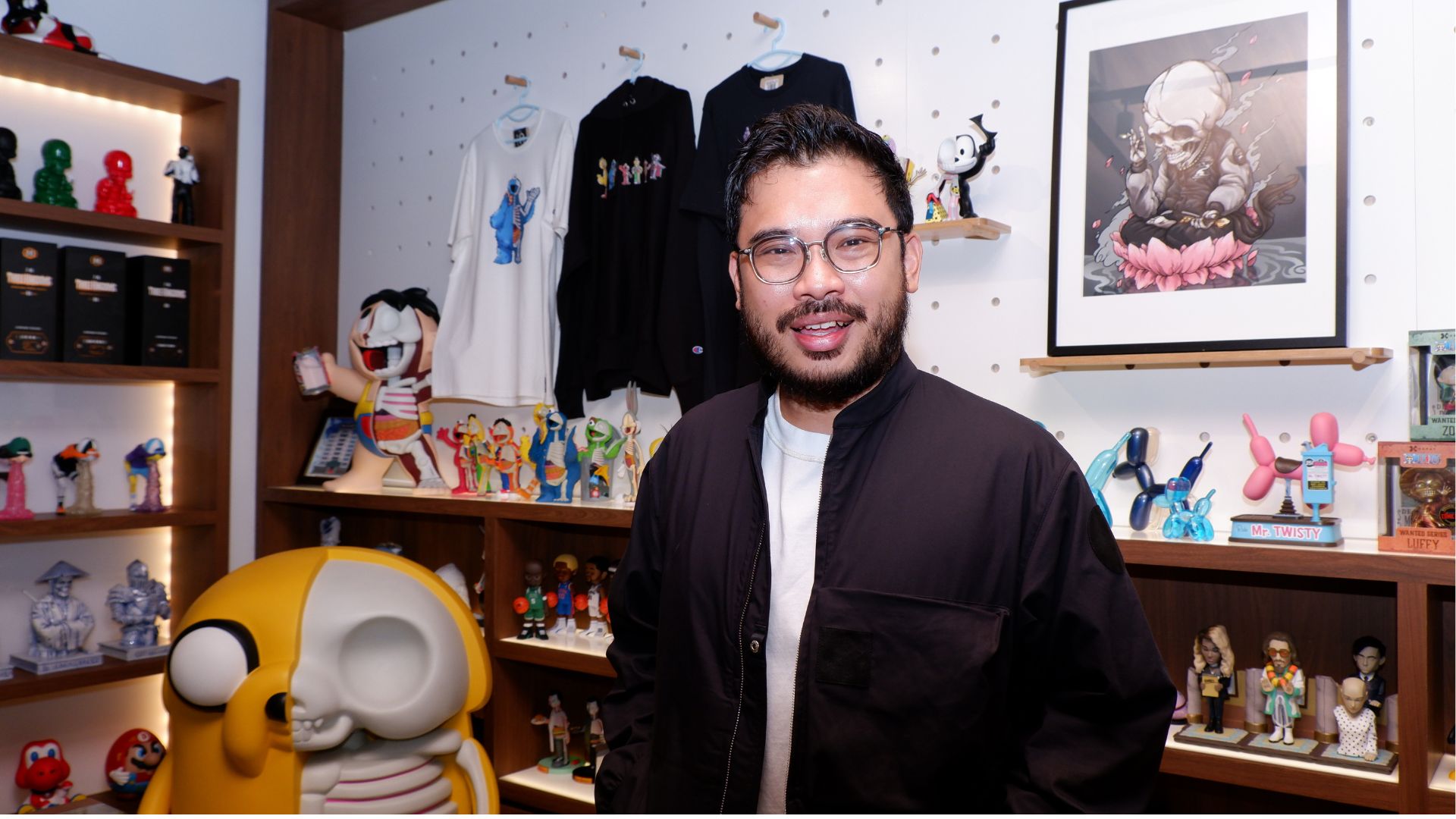GGV Capital’s global managing partner Jixun Foo and vice president Dimitra Taslim recently joined an online Q&A session with a group of founders from East Ventures portfolio companies. Willson Cuaca, co-founder and managing partner of East Ventures, hosted the discussion covering various startup growth and fundraising topics.
This article shares some highlights from the dialogue.
Willson Cuaca: What are the criteria you focus on when deciding on an early-stage investment?
Jixun Foo: We start by asking two very basic questions: Why now? Why you? Why hasn’t this happened before? What is the opportunity available today? What is the impetus? What are the drivers? Why has it not happened three years ago? Why wouldn’t it happen in two years? There might be some underlying factors, such as technology. For example, when China went from 3G to 4G, short-form videos emerged, made possible by the evolution of phones. The development of a network made it possible for creative new ideas to flourish. There could also be regulatory or licensing factors at work. And then there’s the important question of how big this can be in the addressable market.
We also ask why you would be the one. After all, many people can launch a similar product, idea, or service. But why are you the winner? The answer might be a first-mover advantage – the fact that you are first doing it. But often, the execution factor is not easily differentiable.
The market also changes, so we have to evolve our assessment based on that.
Willson Cuaca: India has many more unicorns than Southeast Asia. How do you explain this?
Jixun Foo: While in terms of population, India is bigger than Indonesia, its GDP per capita is less than half of Indonesia. So, you should not look at India’s 1.4 billion people in total but at the addressable population with the purchasing power. That’s why we have to look at the depth and breadth of the market. The propensity to spend has to be there.
Infrastructure is also important. It’s not just the information, the structure, the internet infrastructure, but for eCommerce to take off, you have to have the basic logistics infrastructure to make those deliveries happen and for the service quality to be there.
Dimitra Taslim: Let’s take a look at the numbers in the case of e-commerce and the business model of Amazon/marketplace brand aggregators.
The e-commerce market size in Indonesia is about $50-60B GMV in 2021 and in India, it’s about $70-80B GMV, but India’s population is 6x of Indonesia’s. Why is this the case? I think we often understate the purchasing power of Southeast Asia’s metro cities and overstate the purchasing power of pan-India or Bharat. India is a country of many countries… In terms of GDP per capita, the top 10 million of the population is akin to South Korea, the top 100 million is akin to Mexico, the next 100 million is akin to the Philippines, and the bottom 1.1 billion is akin to sub-Saharan Africa.
Now let’s zoom in on the brand aggregator model that’s currently hot in both markets. Recently we met two startups… one in India and one in Indonesia, and both have been in the market operating for 6+ months. Both are run-rating at $50m+ revenue and are run by management teams of similar quality. The Indian one is raising at a sub-$1B valuation but the Indonesian one is raising at a $200m+ valuation. How does this make sense? Is the Indian one truly operating in a market that has 5x the potential of the Indonesian/SEA one? Can Indian metro cities catch up to SEA metro cities in purchasing power over a 4-5 year runway? I am skeptical of that. So, one must wonder – what are investors really paying for when investing in the Indian one at that price?
In India, when we look at consumers, we’ve primarily focused on essential categories like insurance, loans, and education, where you have to spend money and you have to study. But on the more discretionary spend, we have actually not looked at that many deals in India… we’re more focused on empowering the MSMBs to better serve their communities and identifying Indian founders who are building SaaS products for the world. I think these Indian unicorns are the most interesting ones.
What I have come to learn is that markets have an enduring impact on the opportunity set for founders, even for amazing founders with a reality-distortion field. In every market, there will be sectors with superior genetics compared to the rest. The question to ask ourselves is, which are these sectors with superior genetics?
So to answer your question, I think India has more unicorns because of a few reasons. Firstly, their market is “perceived” to be larger, more homogenous, and hence more exciting. Secondly, they undoubtedly have better tech talent at this point in time, many of whom can compete with Chinese and US engineers and beat them on productivity per unit of variable cost. Lastly, the venture gameplay in India is perceived to be more multifaceted and diversified – to my previous point on “genetics”, it means to say India is perceived to have more sectors that have better genetics than SEA. SaaS is one example. The question is, can the founders tap into these genetics to reach their full potential? And how aggressive can investors be with pricing before the rubber hits the road?
Jixun Foo: Another thing we consider when we look at valuations is that we want to see sustainable businesses – valuation is just one factor. Is this a sustainable, buildable business over a long period of time? That’s what we are trying to identify. Because over the last one or two years, we are seeing some unusual valuation hype. In the last few months, we have seen a pullback at a global level on all the tech stocks. There was a lot of liquidity because of Covid-19, but that liquidity will dry up, and the leverage factors will decrease. Against this backdrop, valuations are coming back down to earth. Some of these hyped valuations we have seen may not be real or sustainable.
Dimitra Taslim: Sometimes, when a founder raises too higher a valuation, it’s tough to live up to the expectation in the next round. You’re not tracking upwards, and that’s not a good thing to see. So, I like founders to think a bit more strategically. Compare it to a situation where you raise less money now at a lower valuation, but you can raise a little more at a higher valuation later on. If you break the big round into a series of smaller rounds, your weighted average dilution actually may not be that different compared to taking the first option, which is where you take the very high valuation now. It allows you to show progress over time, which is very important in a climate like this.
Jixun Foo: Valuation is both an art and science. For instance, why was the price to sales ratio in the past for companies 10:20 and considered expensive? And yet some of these tech companies can be trading a 50-100 times price to sales.
The important thing about valuation is, can you truly sustain the growth you are projecting? Usually, with higher growth, you have to burn more cash and build more capital. And you have to manage your capital in the right way. The other thing I would add is that whether your product or service is delivery or an application, product-market fit is essential. You must differentiate enough to sustain the growth.
So, we look at retention, user feedback, and a lot of other data to ensure that you’re not just acquiring users with capital. You can lose that very, very quickly when you stop spending those funds.
Willson Cuaca: What growth rates should a startup target?
Jixun Foo: I always try to emphasize quality growth because there’s no point trying to grow at 100%, and then the year after, you struggle to grow by another 100%. It’s better to grow at 60-70%, and the following year you are comfortable growing at another 60-70%. The outcome may still be the same, but the point here is that quality is paramount.
So how do you define quality? With an eCommerce or social commerce company, we spend a lot of time invested in studying the shoppers. We look at the 12-month retention figures very closely. So, after 12 months, are the users still buying? Typically, if you’ve dropped below 10% retention, that’s very dangerous. Ideally, you’re at 20%. So those are some of the metrics I use as an example when talking about quality growth.
For SaaS companies, we will look at annual recurring revenue (ARR) where net dollar retention ideally is 100%. The customers that bought from you a year ago will continue to buy, and you will upsell so they continue to buy more. That is quality growth.
Whatever your business or your metric is, it’s crucial to understand the quality of your growth versus just seeing growth.
Willson Cuaca: Is it okay for founders to focus just on growth, raise a lot of money, and only fix the quality later on?
Jixun Foo: That’s probably okay when times are good, and you have enough capital to fix the problems later. But when the tide turns, you have no way to solve the problems because the tide turns very fast.
For example, we invested in a bike-sharing company called HelloBike. We were like the number seven player in the market. The two leading players at the time, Mobike and Ofo, were doing exceptionally well, and they’d raised a lot of money, much more than anyone else. And HelloBike was nowhere, yet today they’re the number one player in China. It’s not about valuation. It’s not about where you were at that time; it is about where you are today. Because those two companies are gone.
So what happened? The leading player launched many bikes into the market, with a price per bike at that time of 200 RMB. That was very, very cheap. But the cheap bikes demanded substantial operational costs. Because they don’t have the right solar-powered GPS-enabled lock, the cost of redistributing the bikes every morning by truck is very high. They find that operating costs are a bigger component than the cost of the bike.
Meanwhile, the cost of a HelloBike is over 1,000 RMB. It’s much more expensive, but it has all the technology to locate the bike accurately. And the firm created incentives to make the consumer return the bike to the desired location. They may have higher capital expenditure, but they can make money on a bike. So, the bike can be cheap, but then you can’t make money, and you lose everything. That’s why it’s all about quality.
In good times, there will always be capital chasing after you. But the tide always turns. There’s the big tidal wave, like the financial crisis, but small tides can also turn on your vertical or sector.
Willson Cuaca: How do you see the world of investing and fundraising evolve over the next year or two? Is this time for startups to ramp up growth as fast as possible, or is it better to be cautious and pursue quality growth?
Jixun Foo: I typically want to advise my entrepreneurs to try to have about 24 months of cash flow. That’s quite important. You have to plan on the basis that you have a runway of 24 months.
I don’t know what the world will look like three months down the road. I do not know if the Fed will raise the interest rates four, five, or six times. There’s a lot of anticipation in the market about this, but nobody really knows the impact. When things pull back, they will pull back very quickly. There’s a deleveraging factor. There was a lot of leverage in the past because people felt like capital was cheap. I can buy more, or I can borrow to buy more. So that’s the leverage effect. Now there’s a deleveraging effect, and that can be pretty significant. The reality is that the Fed is also mindful that they don’t want to cripple the economy or the financial market, so they will manage the number of rate rises.
We need to understand the real issue is inflationary pressure around the world – and in the US in particular – driven by the supply chain and labor shortages. So that’s the catch-22 that the Fed is trying to deal with. But if we can see recovery soon in the supply chain when people return to work, then all this inflationary pressure will be more muted, and the rise in interest rates will be more muted. So that’s a balance that we need to strike.
***
Original article on Next Billion by GGV Capital.








